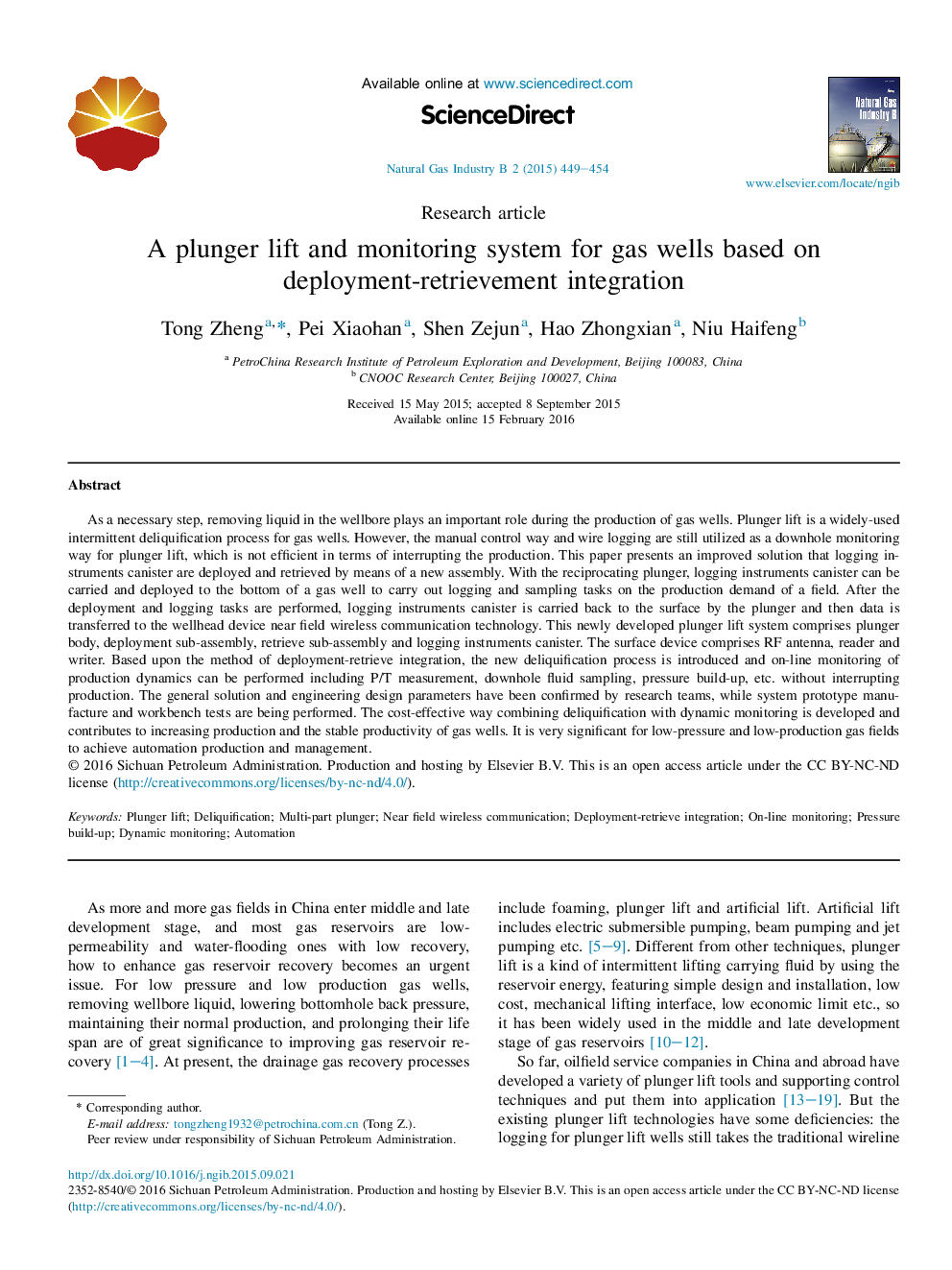| Article ID | Journal | Published Year | Pages | File Type |
|---|---|---|---|---|
| 1747817 | Natural Gas Industry B | 2015 | 6 Pages |
As a necessary step, removing liquid in the wellbore plays an important role during the production of gas wells. Plunger lift is a widely-used intermittent deliquification process for gas wells. However, the manual control way and wire logging are still utilized as a downhole monitoring way for plunger lift, which is not efficient in terms of interrupting the production. This paper presents an improved solution that logging instruments canister are deployed and retrieved by means of a new assembly. With the reciprocating plunger, logging instruments canister can be carried and deployed to the bottom of a gas well to carry out logging and sampling tasks on the production demand of a field. After the deployment and logging tasks are performed, logging instruments canister is carried back to the surface by the plunger and then data is transferred to the wellhead device near field wireless communication technology. This newly developed plunger lift system comprises plunger body, deployment sub-assembly, retrieve sub-assembly and logging instruments canister. The surface device comprises RF antenna, reader and writer. Based upon the method of deployment-retrieve integration, the new deliquification process is introduced and on-line monitoring of production dynamics can be performed including P/T measurement, downhole fluid sampling, pressure build-up, etc. without interrupting production. The general solution and engineering design parameters have been confirmed by research teams, while system prototype manufacture and workbench tests are being performed. The cost-effective way combining deliquification with dynamic monitoring is developed and contributes to increasing production and the stable productivity of gas wells. It is very significant for low-pressure and low-production gas fields to achieve automation production and management.
